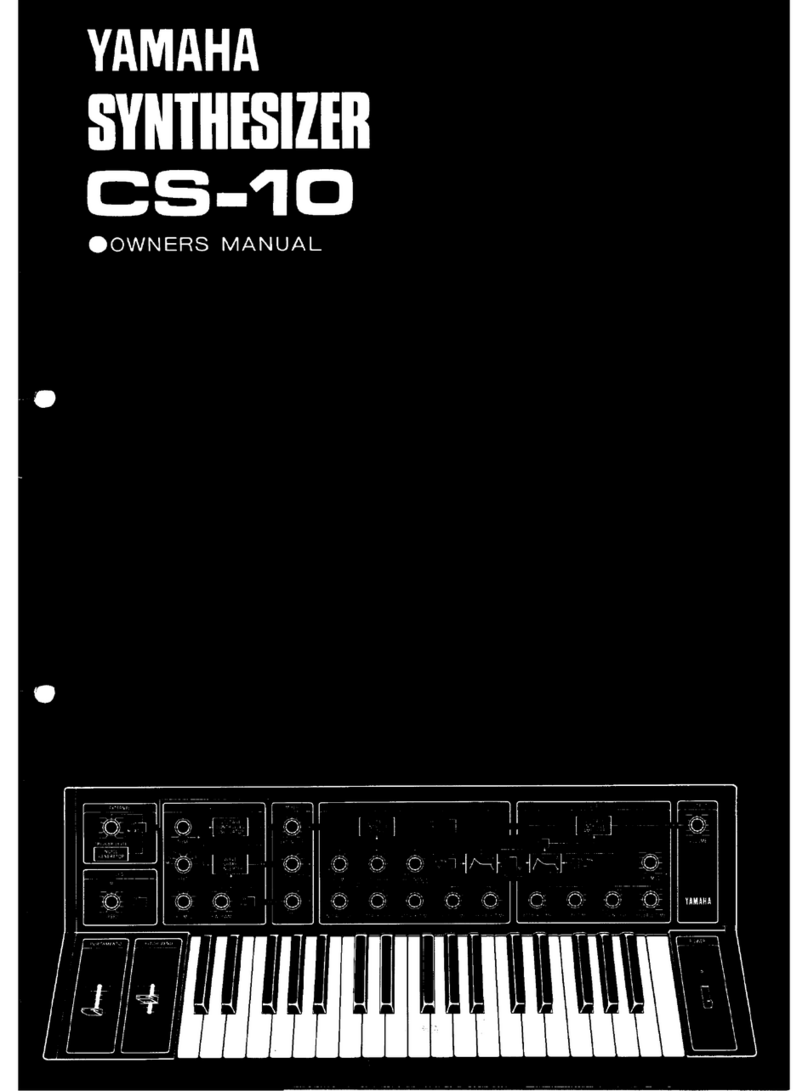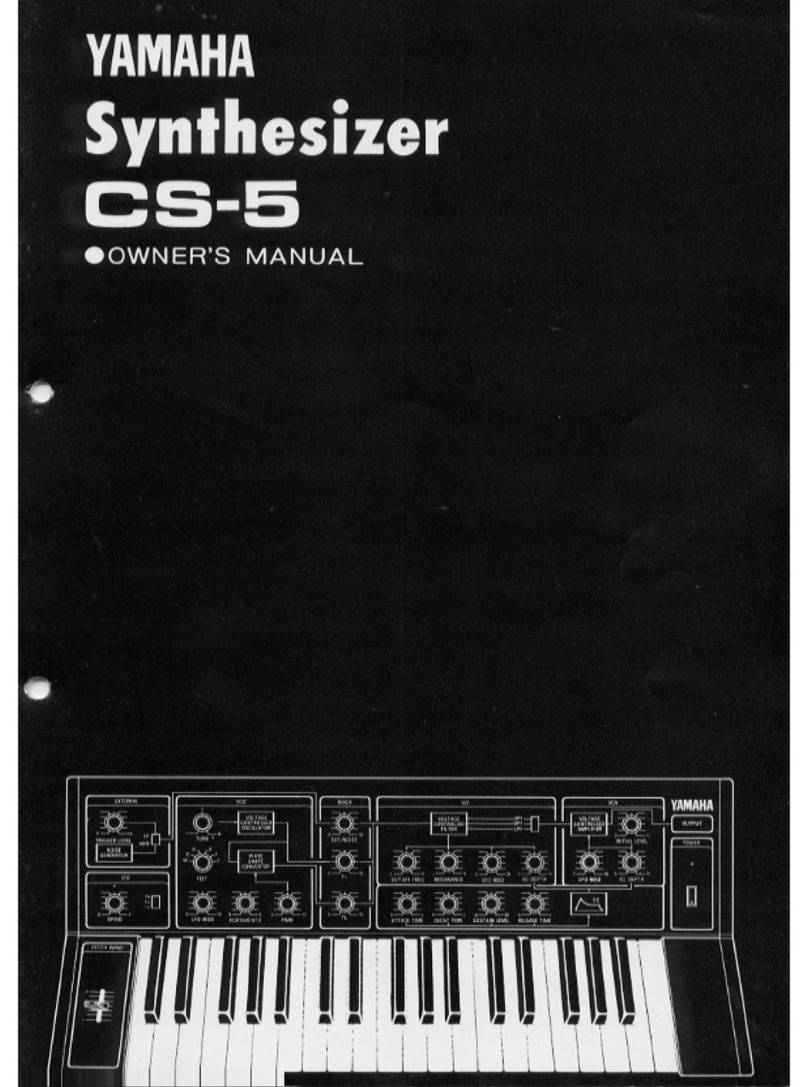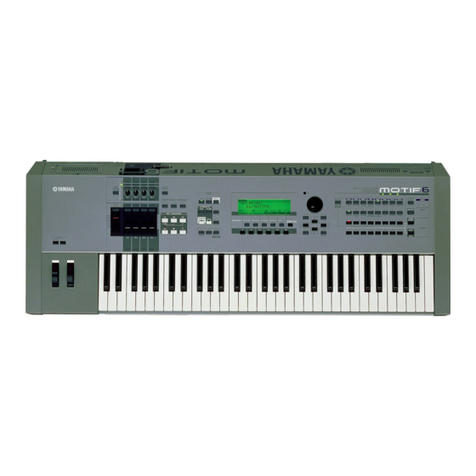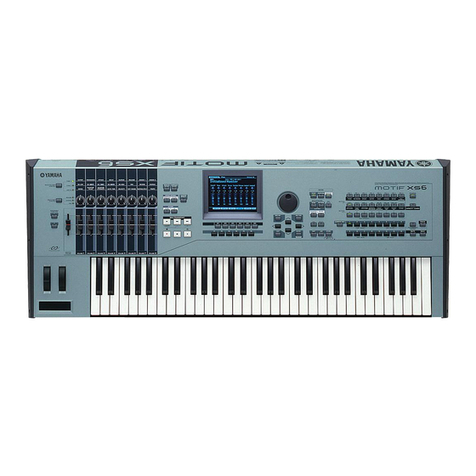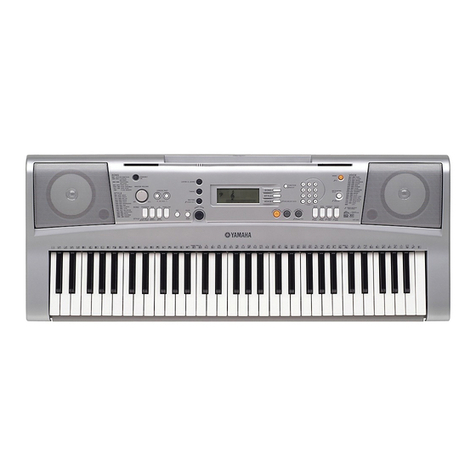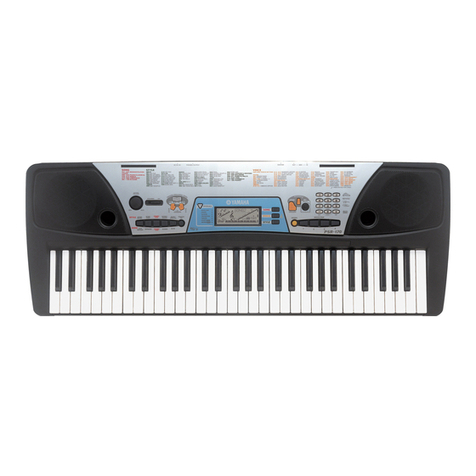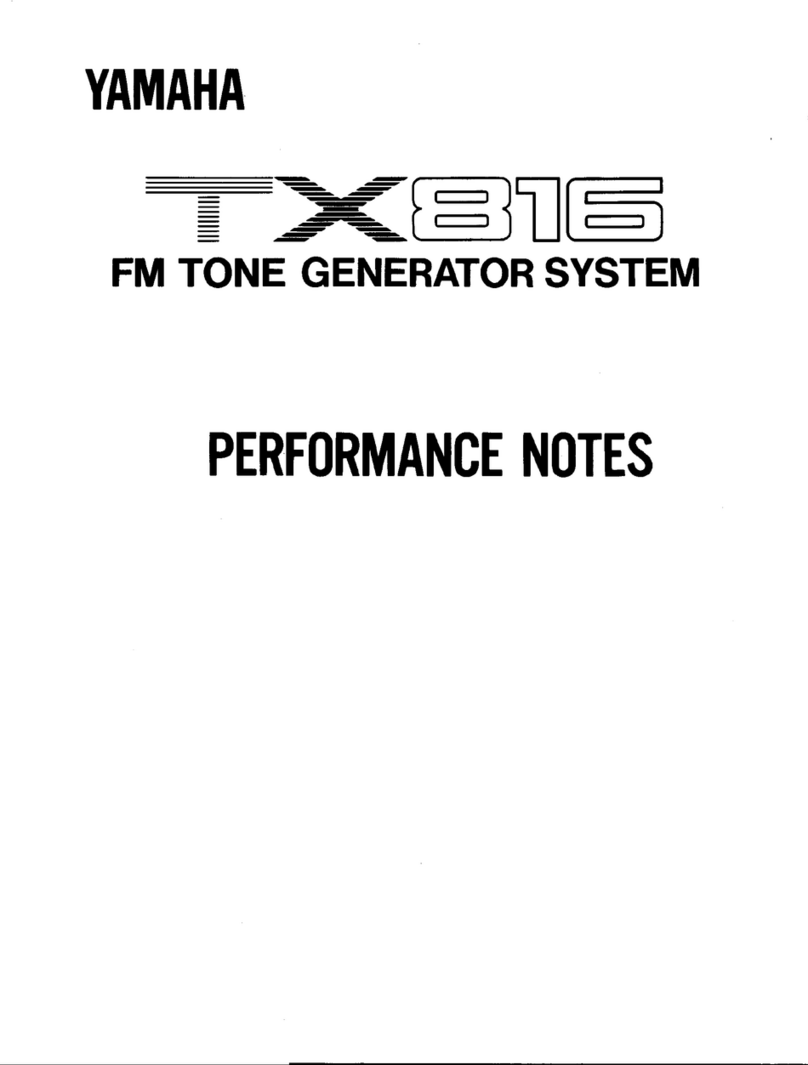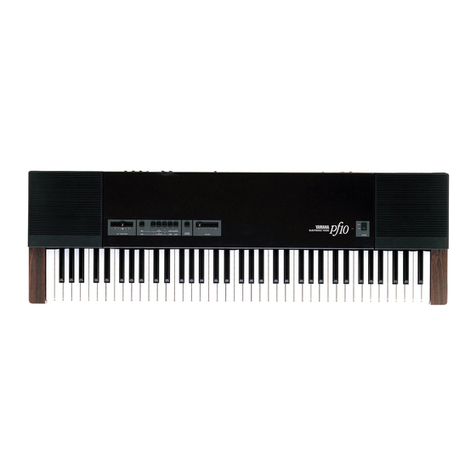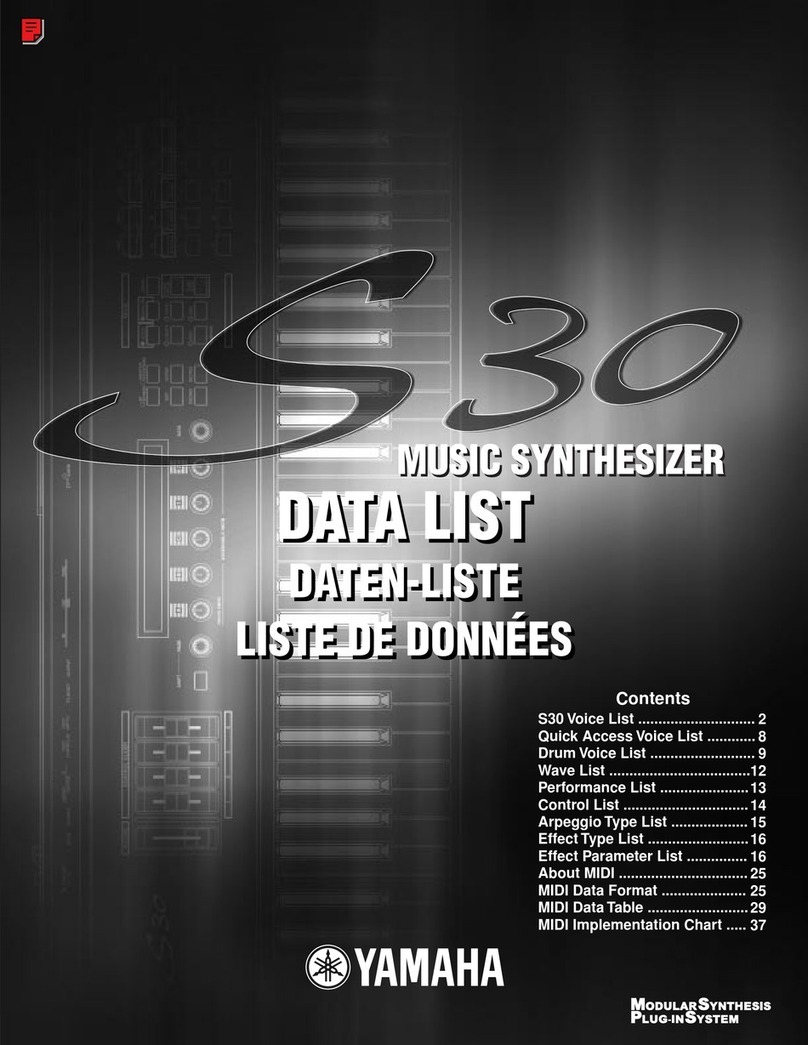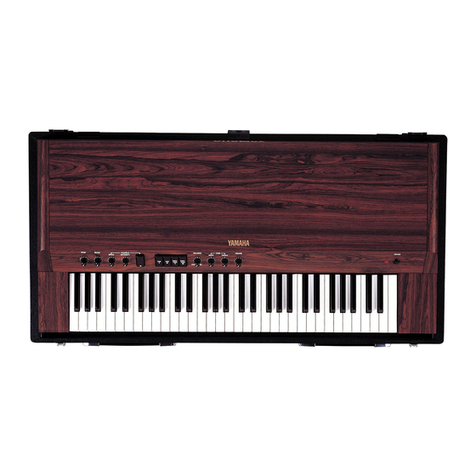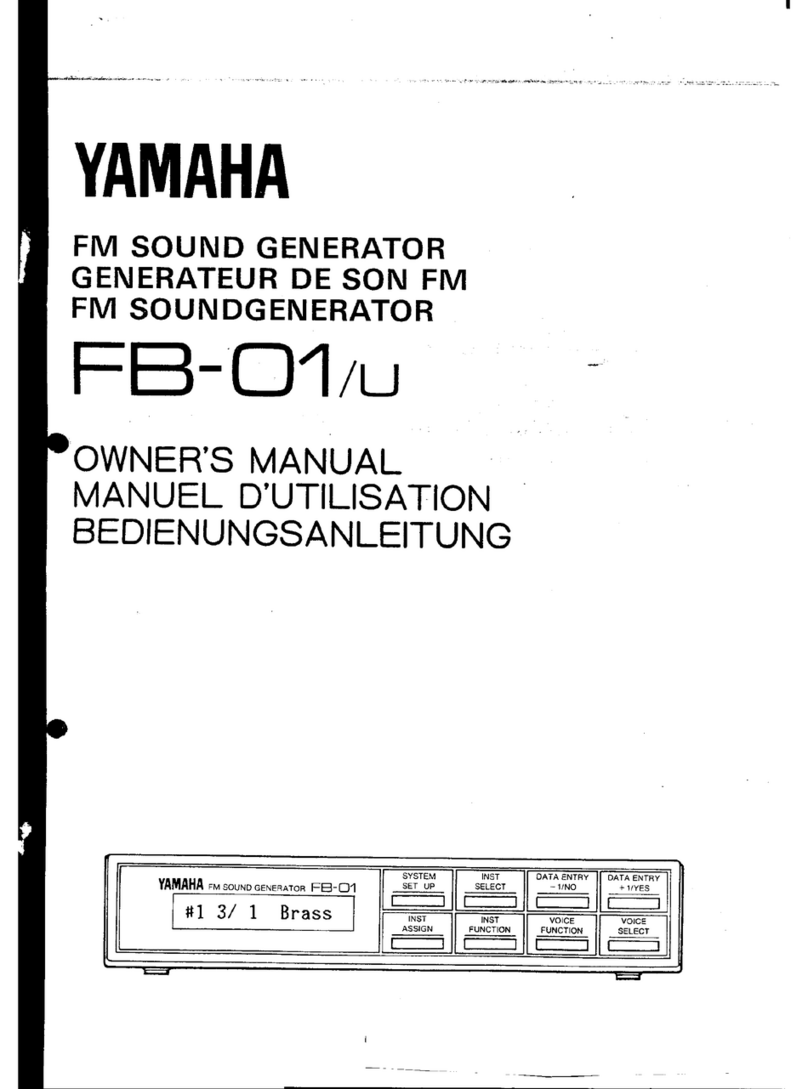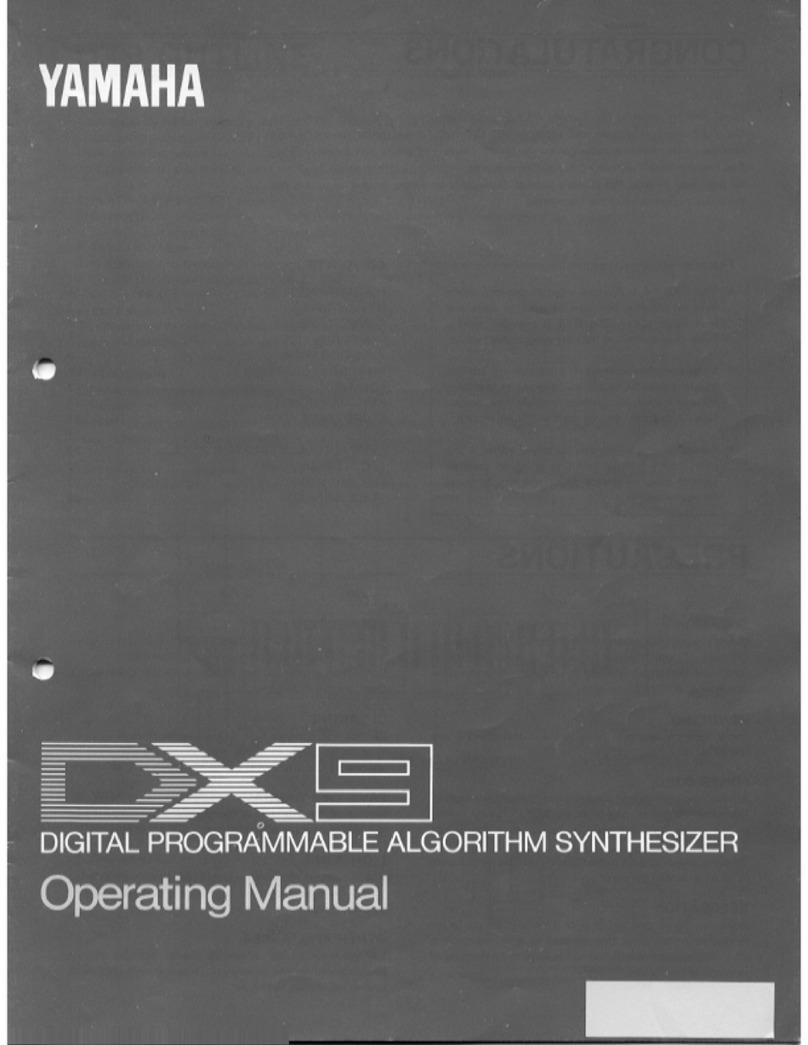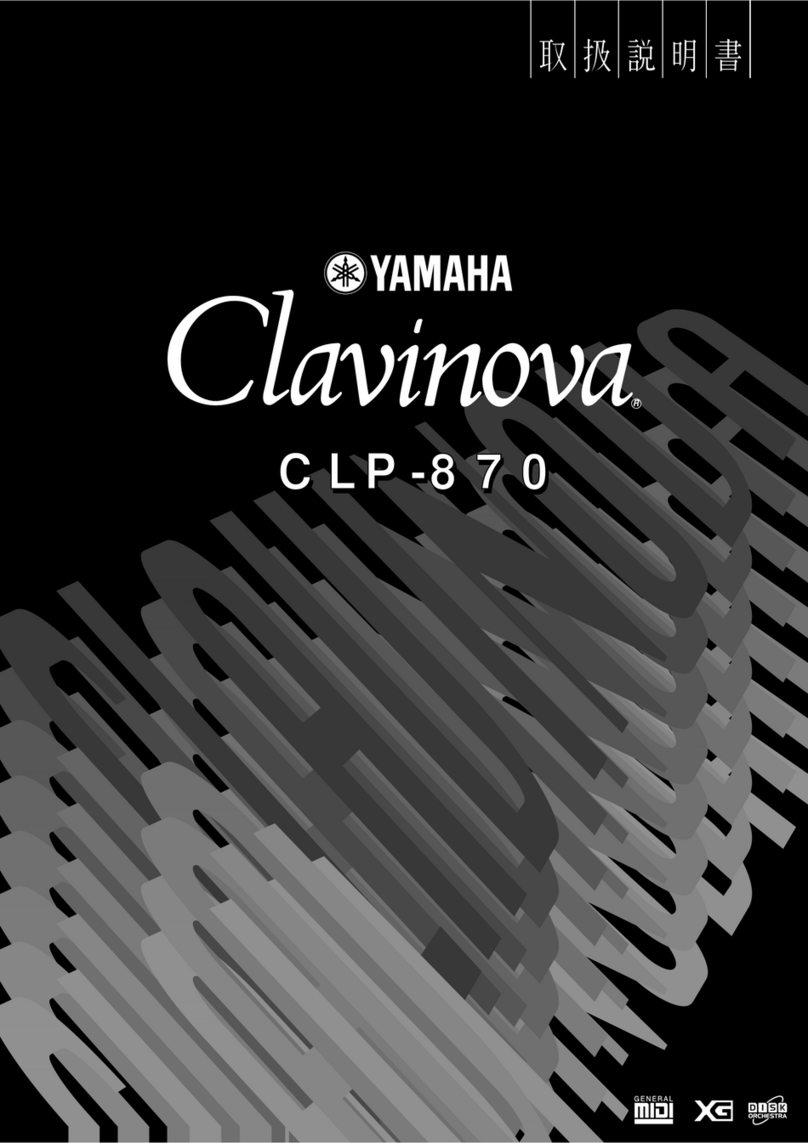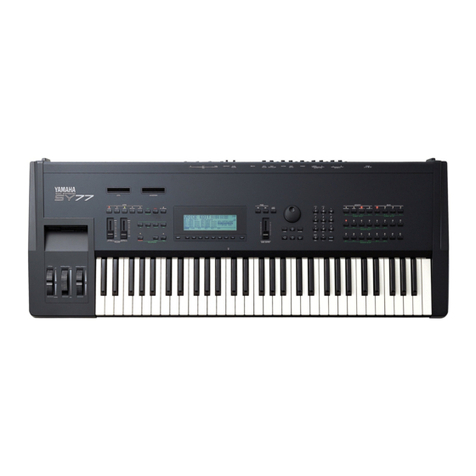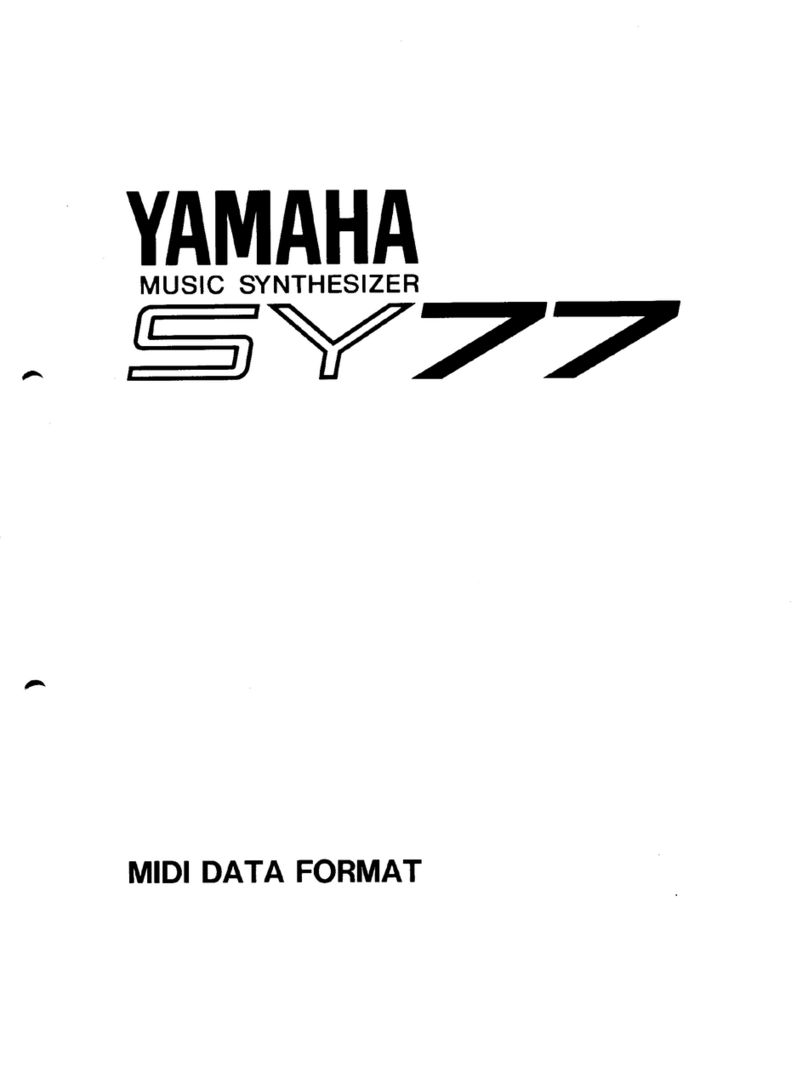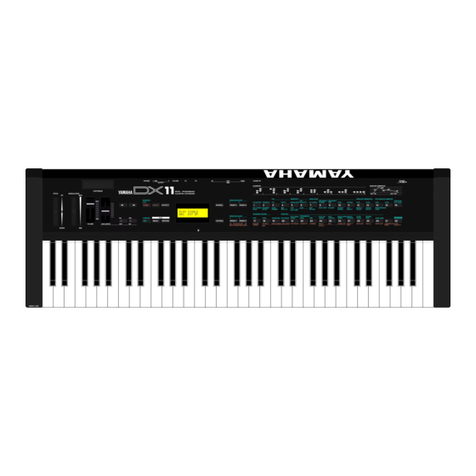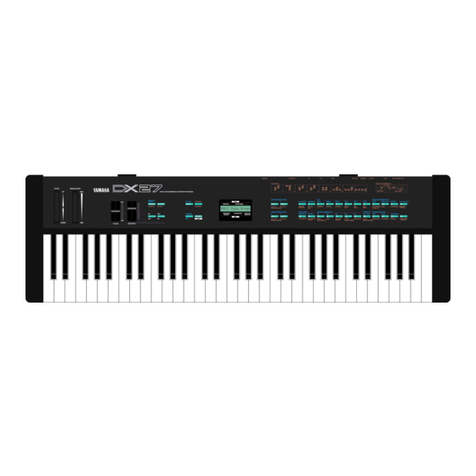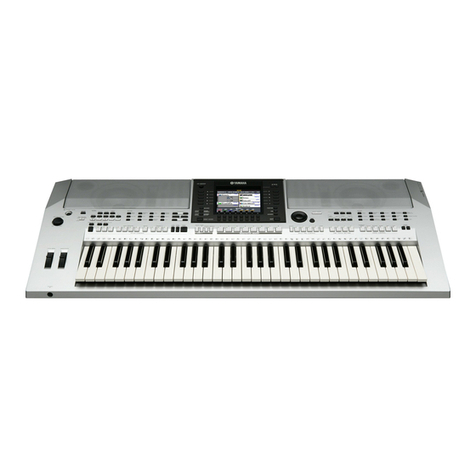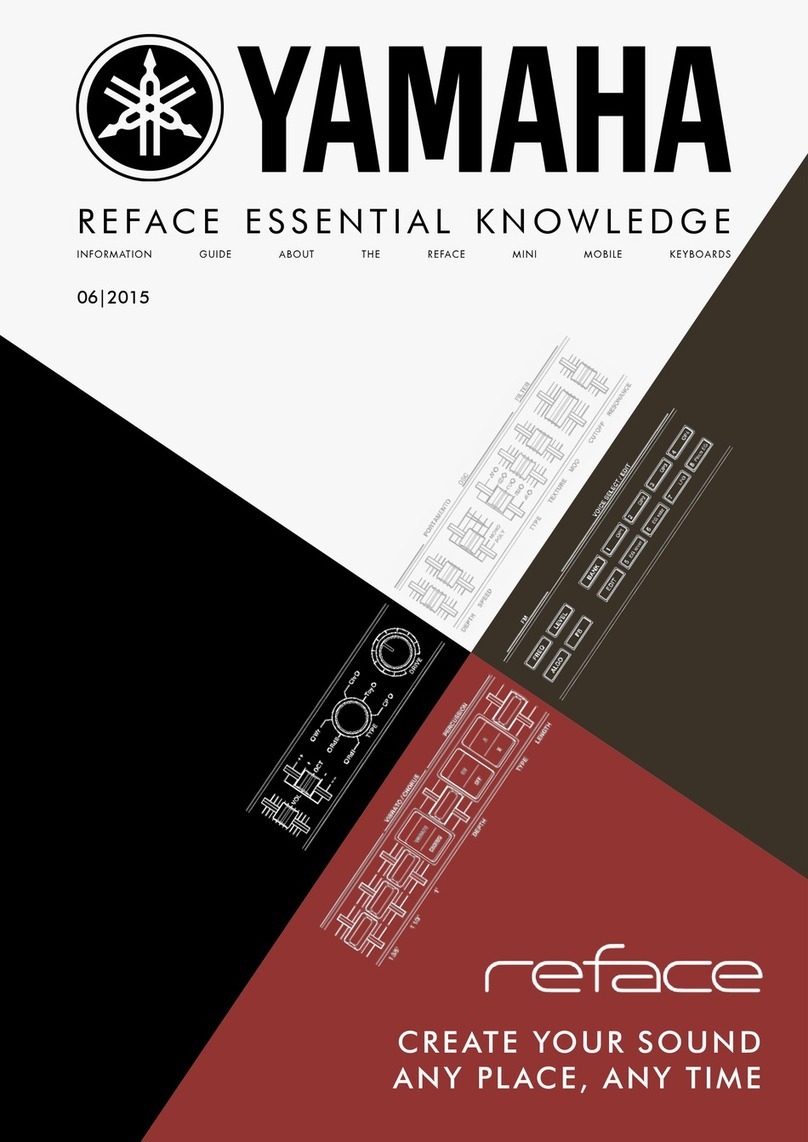•The portamento effect can also be turned ON or OFF
using an optional FC-4 or FC-5 foot pedal once the
portamento function has been turned on in the "FULL
TIME PORTA" mode. Pressing the foot pedal turns the
effect ON. The effect is OFF when the foot pedal is
released.
The portamento effect cannot be turned ON or OFF
in the "FINGERED PORTA" mode.
•An FC-4 or FC-5 foot pedal can also be connected for
sustain pedal control, In the monophonic mode, akey
pressed while another key is held will take priority, and
the sustain effect will apply to the new key.
Releasing the pedal turns the sustain effect OFF.
•CASSETTE
•MODULATIONWHEEL /BREATH CONTROLLER
78910
SAVE /VERIFY LOAD LOAD SINGLE REMOTE
CASSETTE
These keys permit saving all 20 interna) memory voices to
an external cassette tape, or loading 20 voices or aspecified
single voice from an external cassette tape.
SAVE/VERIFY, LOAD, LOAD SINGLE, and REMOTE
keys are provided. Refer to the STORE/SAVE/LOAD
instructions on page 17.
SAVE/VERIFY:
The SAVE function saves all 20 voices in the internal
memory to an external cassette tape, while the VERIFY
function checks to make sure that all the voices were prop-
erly saved.
Pressing the |SAVE/VERIFY |key repeatedly alternates
between the "SAVE TO TAPE?" and "VERIFY TAPE?"
displays.
LOAD:
This key permits loading 20 voices at atime from an
external cassette tape into the internal memory.
LOAD SINGLE:
This key permits loading aspecified single voice from a
group of voices previously saved on acassette tape. The
number of the voice in the group from which the desired
voice wilt be loaded must be specified (1 —20).
REMOTE:
This key permits remote control of cassette recorders that
have aREMOTE terminal. Normally when the cassette
recorder's remote terminal is connected to the DX9, the
tape will not run until! either the LOAD or SAVE function
is initiated even if the Play or Record controls are engaged.
The REMOTE function makes it possible to start or stop
the tape to facilitate locating the beginning of voice groupes,
etc.
11 12 13 14
RANGE PITCH AMPLITUDE EG BIAS
MC«>ULATKDN WHEEL
15 16 17 18
RANGE PITCH AMPLITUDE EG BIAS
BREATH CONTROL
The modulation wheel or breath controller can be used to
control LEO modulation depth applied to pitch, amplitude
or envelope producing controllable tremolo or vibrato
effects while playing. Setting the RANGE, PITCH, AM-
PLITUDE and ENVELOPE GENERATOR BIAS para-
meters for each controller is basically the same process, so
we'll concentrate mainly on the MODULATION wheel.
Since LFO modulation is the effect in question, the voice
used must have non-zero set for PITCH and/or AMPLI-
TUDE MODULATION SENSITIVITY parameters in the
EDIT mode.
Refer to the MODULATION SENSITIVITY section on
page 13 for details.
1. MODULATIONWHEEL
To add modulation effects
RANGE:
Range can be set from to 99. No effect is produced with
asetting, and asetting of 99 produces maximum effect.
PITCH:
Determines whether LFO modulation Is applied to pitch.
Pitch is modulated if ON, and not modulated if OFF.
AMPLITUDE:
Determines whether LFO modulation is applied to ampli-
tude. Amplitude is modulated If ON, and not modulated
if OFF.
^
T
<7>

